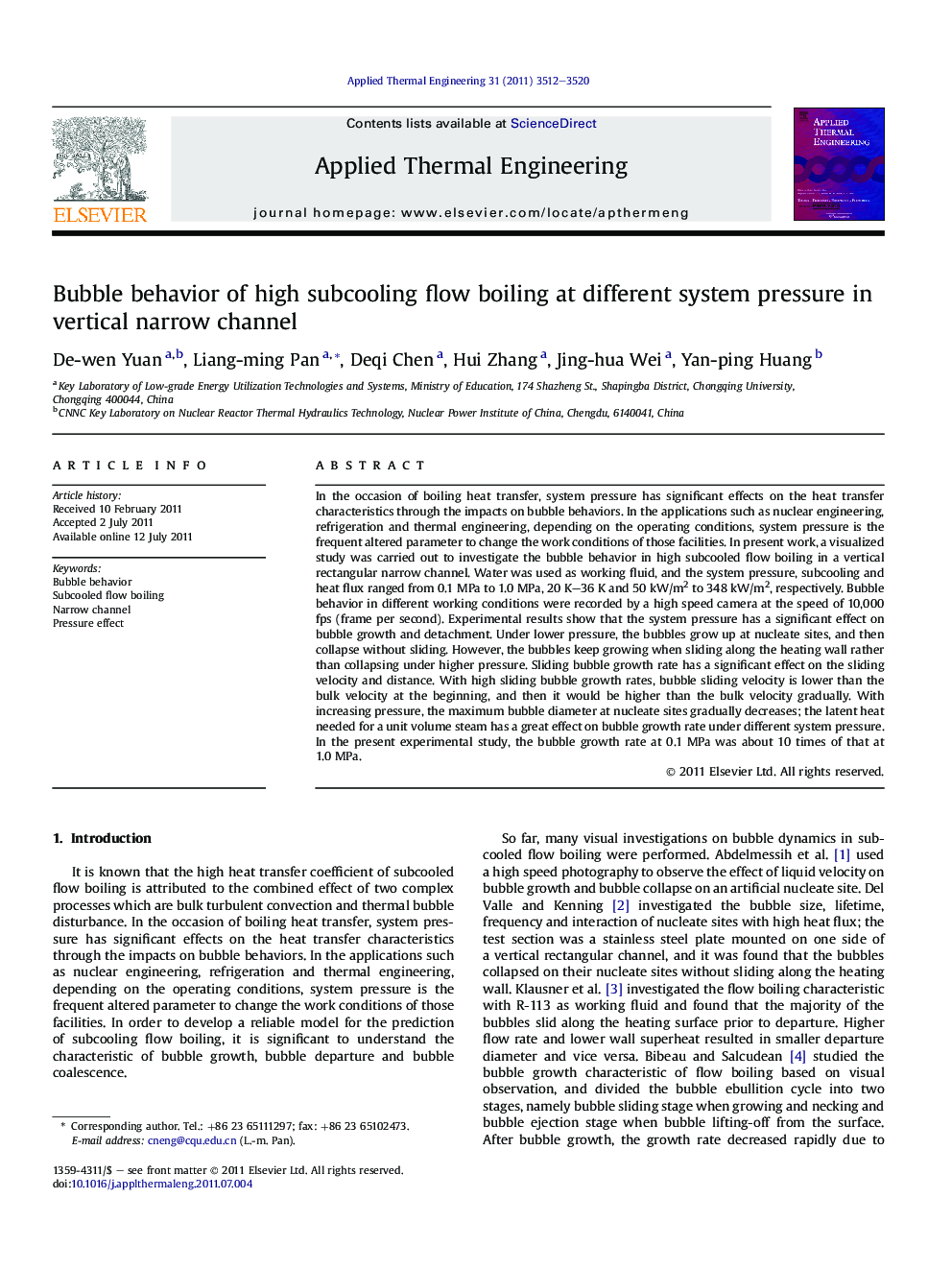| Article ID | Journal | Published Year | Pages | File Type |
|---|---|---|---|---|
| 647689 | Applied Thermal Engineering | 2011 | 9 Pages |
In the occasion of boiling heat transfer, system pressure has significant effects on the heat transfer characteristics through the impacts on bubble behaviors. In the applications such as nuclear engineering, refrigeration and thermal engineering, depending on the operating conditions, system pressure is the frequent altered parameter to change the work conditions of those facilities. In present work, a visualized study was carried out to investigate the bubble behavior in high subcooled flow boiling in a vertical rectangular narrow channel. Water was used as working fluid, and the system pressure, subcooling and heat flux ranged from 0.1 MPa to 1.0 MPa, 20 K–36 K and 50 kW/m2 to 348 kW/m2, respectively. Bubble behavior in different working conditions were recorded by a high speed camera at the speed of 10,000 fps (frame per second). Experimental results show that the system pressure has a significant effect on bubble growth and detachment. Under lower pressure, the bubbles grow up at nucleate sites, and then collapse without sliding. However, the bubbles keep growing when sliding along the heating wall rather than collapsing under higher pressure. Sliding bubble growth rate has a significant effect on the sliding velocity and distance. With high sliding bubble growth rates, bubble sliding velocity is lower than the bulk velocity at the beginning, and then it would be higher than the bulk velocity gradually. With increasing pressure, the maximum bubble diameter at nucleate sites gradually decreases; the latent heat needed for a unit volume steam has a great effect on bubble growth rate under different system pressure. In the present experimental study, the bubble growth rate at 0.1 MPa was about 10 times of that at 1.0 MPa.
► We studied the effect of system pressure on the bubble behavior. ► Under low pressure bubbles grow up at nucleate sites and then collapse. ► Under higher pressure bubbles grow at nucleate sites firstly and then slide. ► The change of bubble growth rates results in different bubble behaviors.
